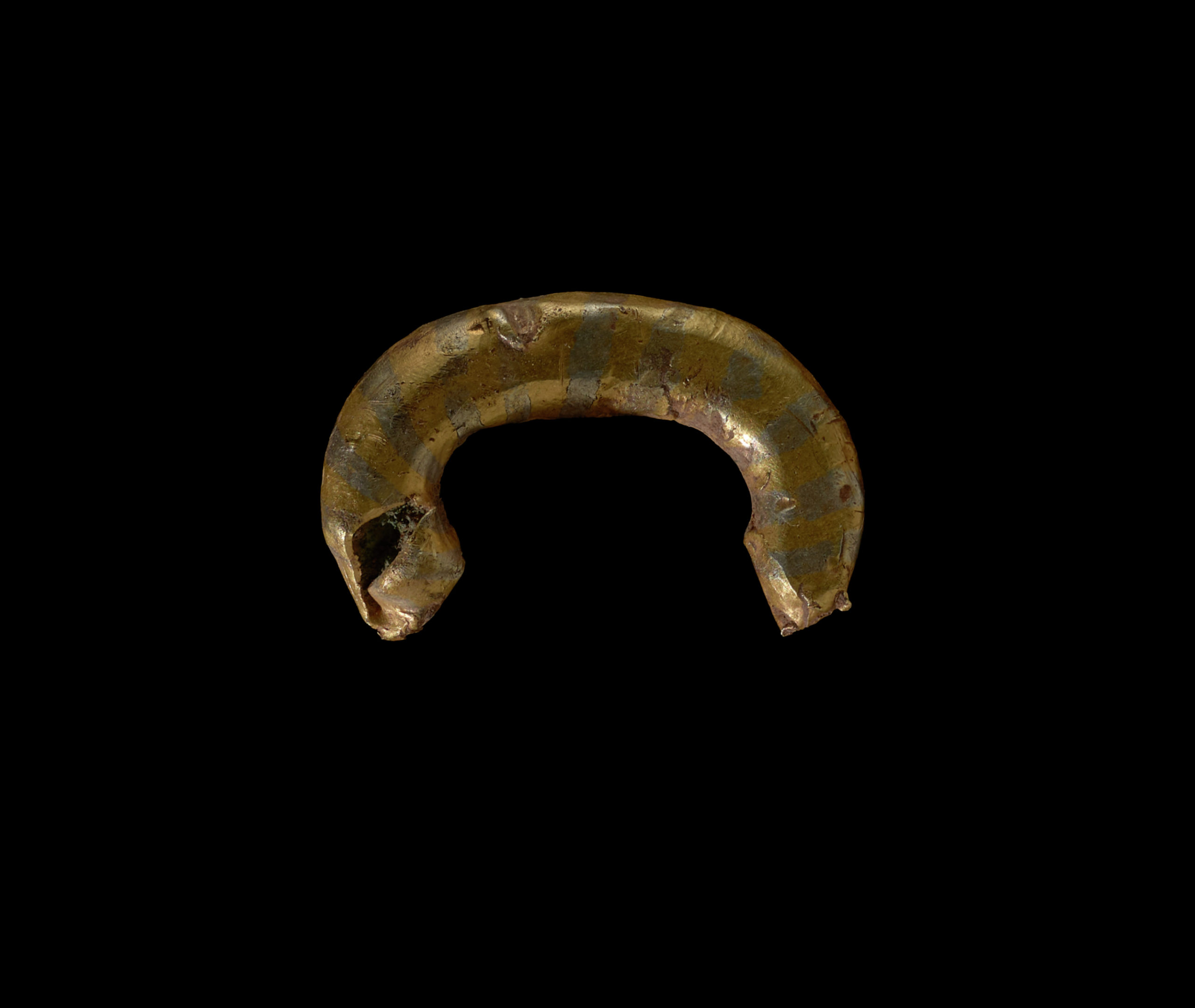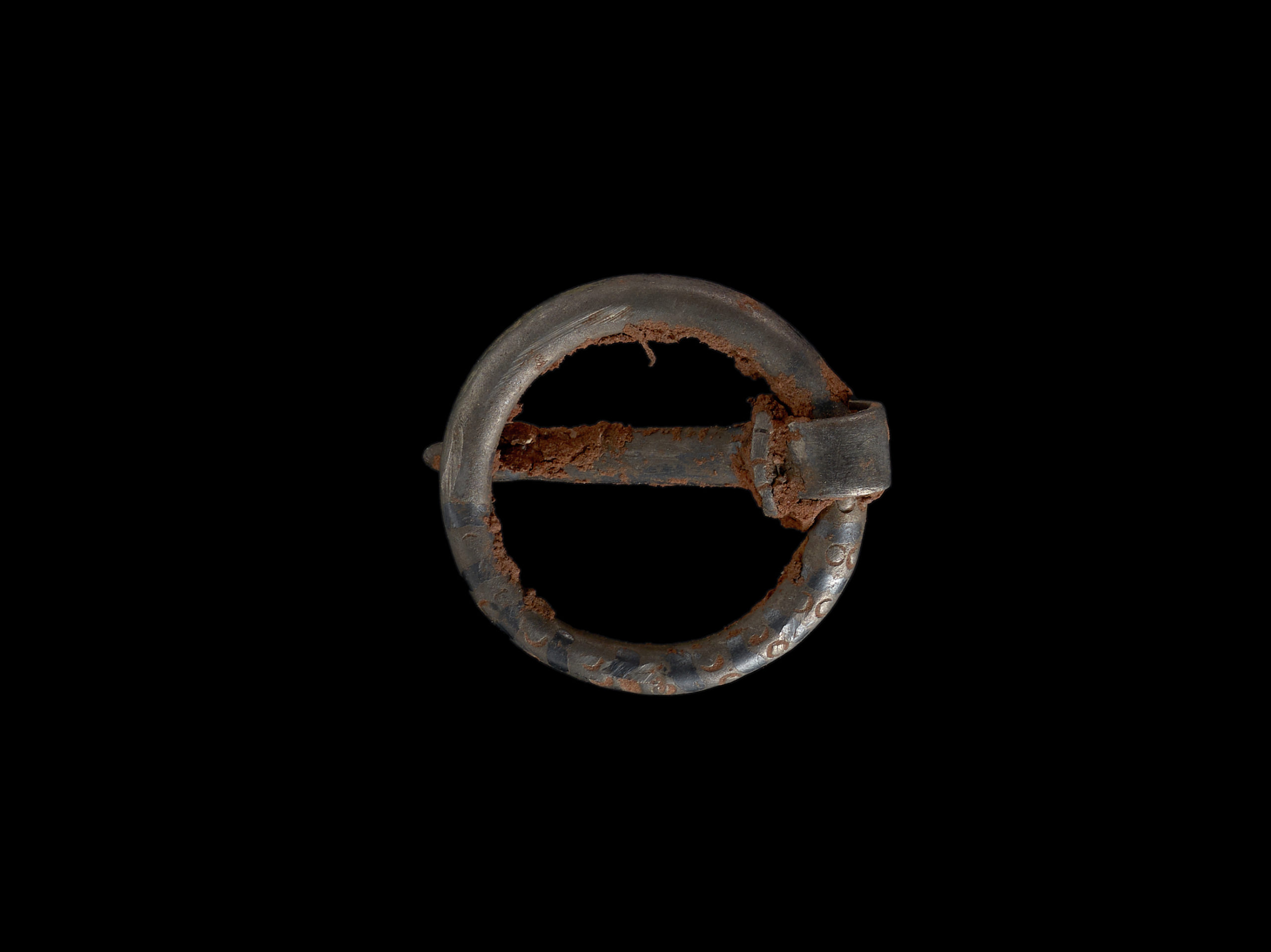Ring and brooch found in Wales officially declared treasure

A late Bronze Age penannular ring and a Medieval silver annular brooch found in Wales have been officially declared treasure.
The two pieces, found in Newport and Monmouthshire, were first reported to Mark Lodwick, Co-ordinator of the Portable Antiquities Scheme for Wales (PAS Cymru).
Today (December 21) both of the beautiful times were officially declared treasure by the Senior Coroner for Gwent, Caroline Saunders.
They have been handed in to National Museum Cardiff, where they were identified and reported on by expert curators from Amgueddfa Cymru – Museum Wales.

Metal detector
A Bronze Age penannular ring (Treasure Case 21.44) was discovered by metal detectorist Mark Hackman under arable land in Michaelstone-y-Fedw Community, Newport on 16th October 2021.
It was identified and reported on by Adam Gwilt, Principal Curator of Prehistory, Amgueddfa Cymru – Museum Wales and research student, Chris Griffiths.
Metallurgical analysis confirmed that it is decorated with gold foil and an inlay of spiralling electrum strip.
Just 2.3cm in diameter and very nearly complete, a tear near one of the
missing terminal ends reveals its copper-alloy core.
Its present C shape with flattened surfaces could be the result of deliberate alterations carried out in order to ‘ritually decommission’ the ring before it was buried.
Rings such as this are commonly referred to as ‘hair-rings’ due to their suggested use as adornment for the hair, although it is possible they were ear or nose adornments.
Occasionally found accompanying human remains, they overwhelmingly date to the Late Bronze Age (1150-800 BC) in Britain, Ireland, and parts of Belgium and France.
This discovery therefore contributes valuable archaeological insight into the craftsmanship, styles, and cultural connections of these farming communities at both local and continental levels.
Chris Griffiths, a PhD researcher with Amgueddfa Cymru and the University of Reading, said: “Although it weighs less than five grams, the artistry and care which went into the creation of this small penannular ring cannot be overstated.
“A strip of electrum was carefully wrapped around and fused with gold foil, creating a sheet of precious metal which is as thick as a piece of paper.
“The way in which these stripes would have reflected the light of the sun or a
fire would have been mesmerising, perhaps helping to mark the status of its wearer who lived in this part of Newport, around 3,000 years ago.”
The finder of the penannular ring, Mark Hackman, said: “As an amateur metal-detectorist, it was an honour to be the person who found this lovely
treasure. I hope that future generations are able to enjoy and learn more about the lives of people who lived here thousands of years ago.”
Newport Museum and Art Gallery has expressed an interest in acquiring the treasure find after it has been independently valued via the Treasure Valuation Committee.

Personal identities
A Medieval silver annular brooch (Treasure Case 22.19) was found by Joanne Prosser on 6th March 2022 during a metal-detecting rally in Caerwent Community, Monmouthshire.
Its frame has a circular cross-section, with half of one face decorated with wide grooves of black-coloured niello inlay. The wrap-around head overlaps at the top and swivels freely on the frame.
At the junction of pin-head and shank, the raised collar is decorated with three transverse punched grooves.
This follows a style of brooch typical of 13 th and 14th century Wales. In particular, the use of niello is consistent with examples known from Carmarthenshire, Powys, and Monmouthshire – illustrating the wider common fashions and styles of dress and personal adornment adopted in Wales at this time.
Sian Iles, the Curator of Medieval and Later Archaeology, Amgueddfa Cymru Museum Wales, said: “Thanks to the introduction of the Treasure Act 1996, items of medieval jewellery such as the silver annular brooch from Caerwent Community are reported, enabling us to build a strong picture of the ways personal identities were being expressed in Medieval Wales, through the
wearing of jewellery and other personal adornments.”
The finder of the brooch, Joanne Prosser, said: “I feel very lucky to have found this brooch in my first few months of detecting. It’s wonderful to think back to the people who made and wore it, and to be part of the story by uncovering it centuries later.”
Chepstow Museum has expressed an interest in acquiring this artefact for its collection after it has been independently valued by via the Treasure Valuation Committee.
Each year, between 50 and 80 treasure cases are reported in Wales, as finds made by members of the public, usually metal detectorists.
Since 1997, over 700 treasure finds have been made in Wales, with numbers of treasure finds gradually increasing over time, with 77 treasure cases reported in 2023 so far.
These finds are adding important new knowledge and understanding of our pasts, a cultural resource of growing importance for Wales.
Support our Nation today
For the price of a cup of coffee a month you can help us create an independent, not-for-profit, national news service for the people of Wales, by the people of Wales.





They’ll probably be nicked for display at the British Museum as happens with most colonial artefacts.
… and then disappear discreetly to be “displayed” in some London toff’s house ! Theivin’ barstewards.